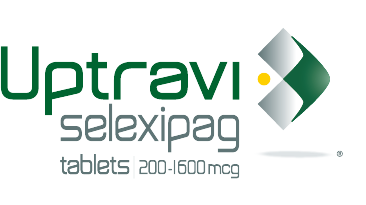STUDY OVERVIEW
UPTRAVI® was studied in the largest trial of any FDA-approved PAH treatment.
- The trial included 1156 PAH patients — comparing 574 patients taking UPTRAVI® to 582 patients taking a placebo (sugar pill).
- Nearly all patients fell within Functional Class II or III (PAH patients range from Functional Class I to IV).
- Patients on UPTRAVI® were treated for up to 4.2 years during this study. The median amount of time treated was 1.4 years.
- The mean age was 48 years; the majority of patients were white (65%) and female (80%).
SIDE EFFECTS
Side effects occurring more frequently (by ≥3%) for patients on UPTRAVI® compared to patients on placebo (sugar pill) are headache, diarrhea, jaw pain, nausea, muscle pain, vomiting, pain in arms or legs, temporary reddening of the skin (flushing), joint pain, low red blood cell count, less appetite than usual, and rash.
*In a clinical trial of UPTRAVI®, PAH disease progression was defined as a serious event, such as hospitalization for PAH; the need to start injectable PAH medications or chronic oxygen therapy; atrial septostomy (a procedure where a hole is placed between two small chambers of the heart) or lung transplantation; a decline in 6-minute walk distance (6MWD) combined with worsening of functional class (FC) or need for additional PAH therapy; or death.
†Patients taking UPTRAVI® walked an average of 12 meters (about 39 feet) farther than patients taking placebo (sugar pill).

